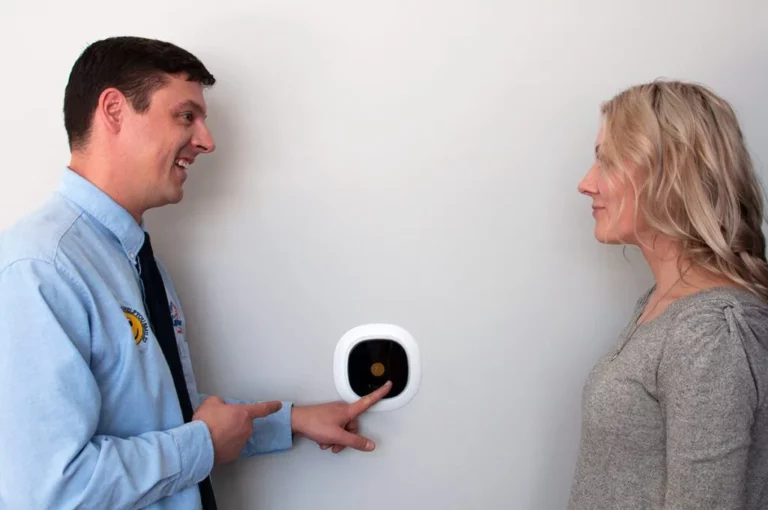
Same Day Service
Since 2001
Call The Gentleman Pros Now!
(403) 879-1759

You and your family love watching movies and you have finally decided to invest in your own home theatre system. Just imagine dimming the lights, relaxing in your recliner, and watching your movie on the big screen with surround sound audio.

You’ve invested a lot of money on your home theatre setup, don’t let a shoddy install impact its performance. Poorly installed systems can lead to:
High-quality components will not make up for a poorly installed system. So let the experts install it for you. We can:
Let us worry about the optimal installation and you can just sit back and enjoy the exceptional immersive experience of your new home theatre.
We will also talk to you about protecting your equipment from power surges. After spending all that money on your dream home theatre, you don’t want to lose it all to a random power surge or rare lightning strike.
In addition to making sure your system is installed, set up perfectly and protected, we can enhance the room’s lighting so it is perfect for movie watching. We can add dimmer switches, move lighting fixtures, and add fixtures. Whatever is needed to get the perfect lighting.
Let’s get your system installed, set up, and you watching movies with your family.
Click the Chat With Us icon at the bottom of the page or call us at (403) 879-1759 and one of our live customer service agents will book an electrician for you. Or you can complete our online form and we will reach out to you as soon as possible.
A home theatre is an audio/visual entertainment centre designed to replicate the experience of watching a movie at a theatre in your home. It consists of a large screen TV or a projector and screen, and an audio system.
A home theatre consists of different electrical components that work together to deliver a more immersive experience than watching an ordinary television.
In Part 1, we will discuss receivers and the audio side of things. For information on the visual and other components, please check out Part 2.
This is a vital piece of equipment in your home theatre system. It is essentially the brain of the operation. Simply put, every other component in the system either sends information to the receiver or gets information from the receiver.
The receiver collects and processes all of the audio-visual information from the components connected to it and then distributes the information throughout the room through the display (TV or projector) and speakers system.
You can have many devices hooked up to your receiver, for example, the cable box, a gaming system (Playstation, Xbox, Nintendo, etc.), a smart TV, satellite boxes, and turntables. The receiver takes the audio and visual inputs from these devices and then sends them to the TV and speakers for you to enjoy.
The receiver has a built-in amplifier.
The type and number of speakers you purchase will depend on the size and complexity of your system, your budget, and the audio experience you want to achieve. The most common audio setups are the front-facing system and the surround sound system.
A front-facing sound system usually only has two speakers on either side of the TV or screen. It has two channels (one for each speaker), one for dialogue and the other for ambient sound.
If you choose to go the surround sound route, you will need a few more speakers. There are different types of surround sound systems. The most common is a 5:1 channel surround, a smaller system is a 3:1 channel surround and a larger system is a 7:1 channel surround.
The numbers in the format refer to the number of speaker channels and subwoofers the system has. A 5:1 channel has five speaker channels and one subwoofer, a 3:1 has three speaker channels and one subwoofer, a 7:1 has seven speaker channels and one subwoofer, and a 7:2 has seven speakers and two subwoofers.
A standard 5:1 audio setup would have:
There are many models of speakers on the market that can be used in the surround sound format. There are floor-standing speakers also called tower speakers, bookshelf speakers, in-wall speakers, and on-wall speakers to name a few.
The type of speaker you choose will depend on the room, where you want to put the speakers and your budget.
A type of speaker designed to reproduce low-frequency sounds.
A third option to the two listed above is a soundbar. A sound bar is exactly what it sounds like. It is a bar full of small speakers that is placed either in front of the TV or screen or mounted above it.
A sound bar can be a great and economical option if you don’t want to shell out for a full speaker package. It will still provide quality sound for the entire room. Some will connect with subwoofers and other speakers to enhance your listening experience.
How you connect all the pieces of your home theatre is important and is usually overlooked.
Not all cables and wires are created the same. Don’t invest in the equipment and then cheap out on the items that connect everything together. That is a surefire way to not get the performance you want from your home theatre.
To connect your home theatre system you will most likely use speaker wire and HDMI cables.
Regarding the speaker wire, pay attention to the gauge. You don’t want to use thin wire, especially over distances to connect your speakers. It could kink and break. Make sure you use a durable gauge, like 14 or 16 gauge to connect your speakers.
Use quality 2.0 or later HDMI cable in your home theatre. Early versions might not support the higher frame rates and bandwidths in today’s home theatres.
One other thing to think about. If you stream a lot of your media, think about using ethernet cables to connect your streaming device directly to your network. This should help eliminate buffering and low-resolution streaming.



